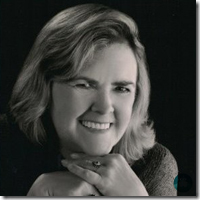 |
 |
 |
 |
 |
 |
 |
 |
 |
 |
| Dr Ann Burgess |
 |
| Naturalist, Ornithology, Astronomy and Destination Speaker |
 |
|
 |
 |
| Coming from: |
 |
Parksville, British Columbia Canada |
 |
 |
| Contact details: |
 |
|
 |
| EXPERTISE |
| Astronomy & Space Science |
| Travel & Destinations |
| Wildlife & Nature |
|
 |
 |
 |
| PREVIOUS EXPERIENCE WITH: |
         
|
Ann Carroll Burgess, Ph.D. , born and raised in Boston, Massachusetts, .s an award-winning writer, photographer, and lecturer. She studied physicl science sat Northeastern University and continued her studies with a Masters in Geography and later a doctorate in Environmental Studies at Canterbury Coillege. For the past twenty-two years she has lectured on cruise ships as both a naturalist and destination speaker.
Twenty-two years ago Ann took up the challenge of lecturing at sea, sharing her passion for nature and history as an enrichment lecturer. Her website: DeckChairNaturalist.com is devoted to how you can to best observe nature from a ship and maximize your time in a port-of-call. A peripatetic traveller, she has ventured to all seven continents.
Click here to visit Ann's website >>
http://deckchairnaturalist.com

WHAT LIES BENEATH
12 Men have walked on the surface of the moon, to date, only 3 have been to the deepest reach of our oceans. Discover the varying forms of life at descending depths and how they have adjusted to the cold, the dark and, intense pressure.
ANCIENT MARINERS
Sharks, sea turtles, rays, and cephalopods have survived millions of years on earth, are now facing their greatest challenge …humans. Can we save these species from extinction?
OTTERS, ORCAS AND,HUMPBACK WHALES
Alaska's waterways are filled with playful otters, voracious orcas and, migrating humpback whales, to name a few. Learn how to spot these animals and understand their various behaviors at sea.
MARINE MAMMALS OF THE EASTERN MEDITERRANEAN
Bottlenose and Risso's dolphins, fin and humpback whales, orcas, and seals all make their home in the Eastern Mediterranean.
CURIOSITIES OF NATURE
Nature is filled with curiosities, from jellyfish that clap like castanets to lobsters that walk the ocean floor in a conga line. Nature is not always what you would expect.
HOW NATURALISTS HAVE CHANGED OUR THINKING
Darwin, Humboldt, Banks, Carson, and Flannery have changed our perceptions of our world for centuries. Discover the lives and work of these influential scholars.
NATURE'S SPECIAL EFFECTS
From the green flash at sunset to red pillars t dawn, natures create and fascinates us with an ever-changing array of visual effects, all done with water, dust, and light.
BETWEEN THE WINGTIPS
From beak to tail feathers, birds are marvelous at adaptation. Learn how every part of the bird is designed to help the bird succeed.
ASTRONOMY TOPICS
EARS TO THE SKY
Radio astronomers are not trying to determine if ET is phoning home. Over the years radio telescope discoveries have included radio galaxies, pulsars, and quasars because they can “see” things that are not detectable by optical devices. It was radio astronomy that discovered cosmic microwave background radiation. The future may reveal even greater discoveries.
THE NEW ASTRONOMY
The Kuiper Belt, Oort Clouds, and the Heliopause have added new dimensions and depth to our understanding of the universe and given us new areas to explore, learn more about these “new” features of outer space.
THE SUN, THE RODNEY DANGERFIELD OF SPACE?
The sun is so familiar to us, that we fail to appreciate how even subtle changes within its mass can affect our lives, from solar storms capable of interfering with communications to a drop in energy that can trigger an ice age. Discover why we are beginning to carefully monitor this everyday object in the heavens.
GALAXIES, NEBULAE, AND CLUSTERS
Space is vast, but not empty, it is populated with masses of stars that in various stages of their life can produce, nebulae, clusters, superclusters and even clusters of galaxies. Where does our Milky Way feature in this realm?


I have been an enrichment speaker for 15 years, with assignments on all seven continents for Royal Caribbean, Celebrity, Princess and Sea Dream Yachts. I am an award-winning speaker, author, and photographer with a passion for nature. My career began with the Museum of Science in Boston, USA. My website is: deckchairnaturalist.com
The following recent Cruise History has been recorded for this candidate.

 |
SHIP |
REF |
 |
CRUISE DESCRIPTION |
NIGHTS |
SAILING FROM |
DEPARTURE DATE |
 |
 |
 |
Viking Orion
| OR240613 |
Alaska & the Inside Passage |
10 |
Seward (Anchorage), Alaska |
Thursday, June 13, 2024 |
 |
Viking Orion
| OR240603 |
Alaska & the Inside Passage |
10 |
Vancouver |
Monday, June 3, 2024 |
 |
Viking Orion
| OR240524 |
Alaska & the Inside Passage |
10 |
Seward (Anchorage), Alaska |
Friday, May 24, 2024 |
 |
Viking Orion
| OR240514 |
Alaska & the Inside Passage & Glacier Bay |
10 |
Vancouver |
Tuesday, May 14, 2024 |
 |
Insignia
| INS230405 |
World Cruise Sector - Safaris & Global Gems |
21 |
Cape Town |
Wednesday, April 5, 2023 |
 |
Viking Orion
| OR20821 |
Alaska & the Inside Passage |
10 |
Seward (Anchorage), Alaska |
Sunday, August 21, 2022 |
 |
Viking Orion
| OR220811 |
Alaska & the Inside Passage |
10 |
Vancouver |
Thursday, August 11, 2022 |
 |
Viking Orion
| OR211220 |
Mexican Riviera Sojourn |
16 |
Los Angeles, California |
Monday, December 20, 2021 |
 |
Viking Orion
| OR211204 |
Mexican Riviera Sojourn |
16 |
Los Angeles, California |
Saturday, December 4, 2021 |
 |
Viking Sun
| SU191209 |
World Cruise 2019 - 2020 Sector 7 |
26 |
Valparaiso (for Santiago) |
Monday, December 9, 2019 |
 |
Viking Orion
| OR190526 |
Alaska & the Inside Passage |
10 |
Vancouver |
Sunday, May 26, 2019 |
